If you’re looking for an eye-catching houseplant to add to your home, you may have come across Alocasia. This genus is full of spectacular plants, but a few of them really stand out. Alocasia zebrina is one of those: Its large size, arrow-tip leaves and striped stems make this species truly impossible to overlook.
Keep reading to find out everything you need to know about Alocasia zebrina and growing this tropical houseplant indoors!
| Common name(s) | Zebra plant, zebra Alocasia |
| Scientific name | Alocasia zebrina |
| Family | Araceae |
| Height and spread | Up to 5 feet high and 3 feet wide |
| Light | Bright indirect |
| Soil type | Moisture-retaining but well-draining |
| Water | Let first 1 to 2 inches of soil dry out |
Disclosure: If you shop from my article or make a purchase through one of my links, I may receive commissions on some of the products I recommend.
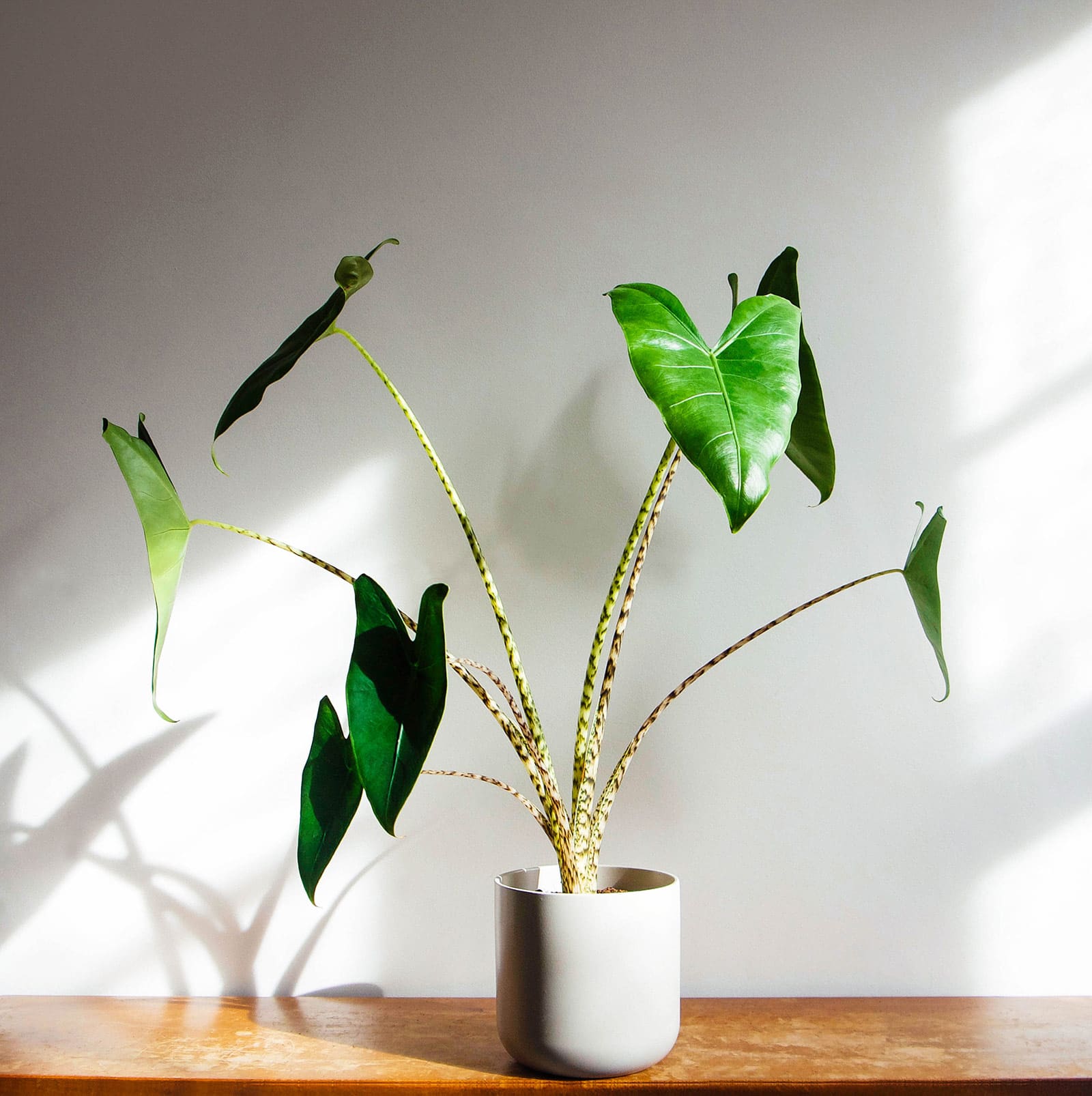
About Alocasia zebrina
Natural habitat
This species, which is one of the many members of the aroid family Araceae, is naturally found on various islands in the Philippines. Here, it grows in wet tropical biomes, mainly tropical rainforests at low to medium elevation.
Unfortunately, like some of its other Alocasia cousins (sanderiana and micholitziana), Alocasia zebrina is considered endangered in its natural habitat. Wild collection of the plant is strictly illegal in the Philippines, with punishments of up to 12 years in prison and fines up to a whopping 1 million Philippine pesos (which is around $18,000 at the time of writing).
Description
When the discovery of Alocasia zebrina by horticulturist J.G. Veitch was published in 1862 in Proceedings of the Royal Horticultural Society London, the author wrote:
“A very fine Aroid from the Philippine Islands (…) it was a stout growing plant of bold habit, and had thick green broadly saggitate erect leaves, on stout erect stalks, which were mottled and banded with dark green on a pale green ground, so as to become snake-like in marking. It was both curious and handsome (…)”
Curious and handsome sounds about right for this Alocasia! Like other members of the genus (Alocasia ‘Polly’ and Alocasia ‘Black Velvet’, for example), the zebra plant grows from a central corm.
Its large, arrowhead-shaped leaves are glossy and dark green, but of course, it’s the zebra-striped stems that really demand attention. The light green base with brown to almost black patterning is what lent the plant its name.
Alocasia zebrina is not a small plant, although it’s by no means the biggest Alocasia.
Read more: 23 Gorgeous Alocasia Varieties to Grow at Home (With Pictures)
In the home, it tends to stay around 3.3 feet, with heights of up to 5 feet being a possibility in ideal conditions. Your plant will usually have a maximum of around 10 leaves at a time, with older foliage dying off as new leaves appear.
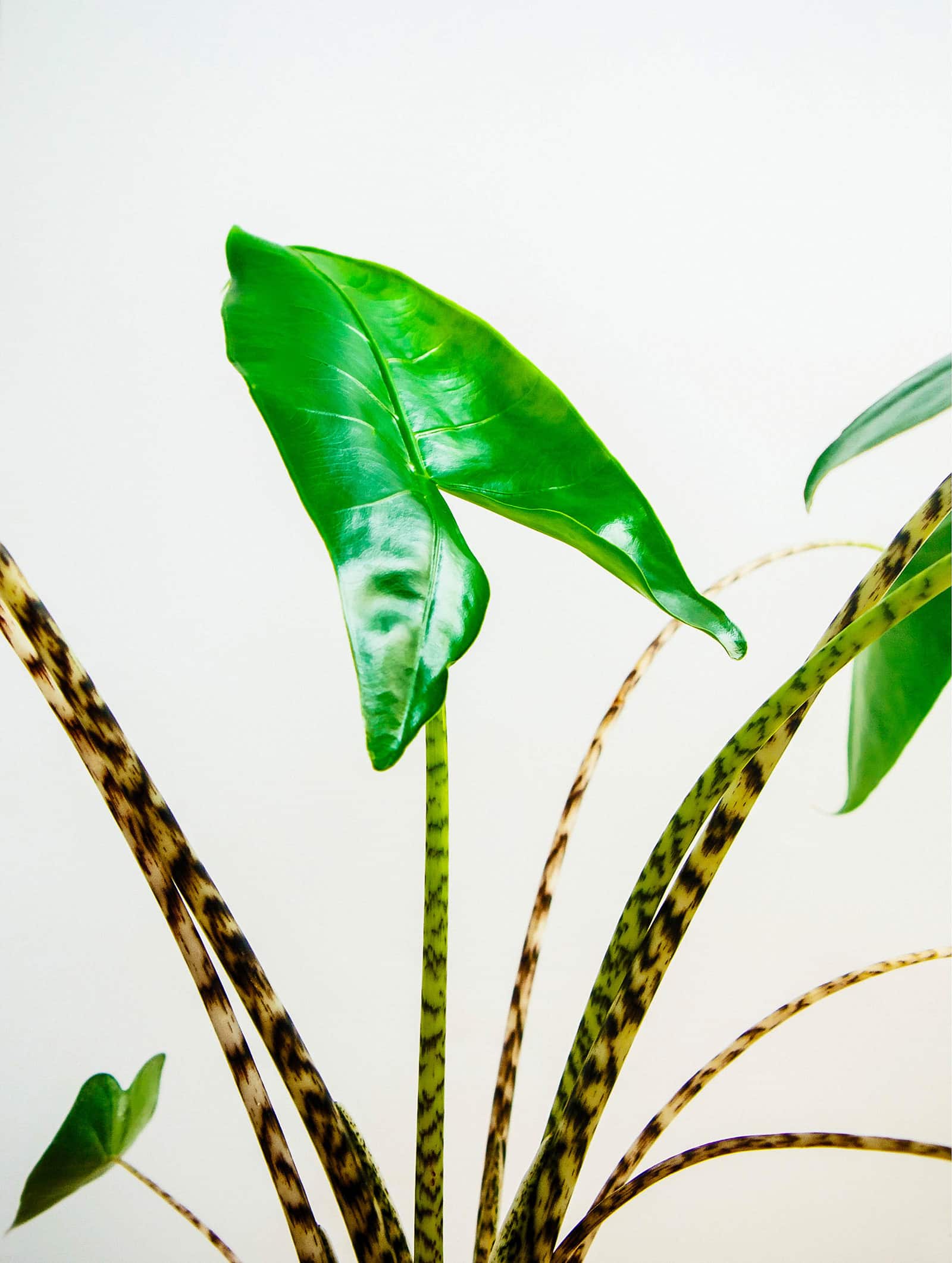
Alocasia zebrina varieties
There are two hybrids and two cultivars of Alocasia zebrina that you may find in specialized plant stores and online.
These are:
- Alocasia ‘Sarian’: This hybrid is a cross between Alocasia zebrina and micholitziana. It sports the former’s beautiful patterned stems, but also the latter’s showy leaves, with wavy edges and pronounced leaf veins.
- Alocasia ‘Giant Zebra’: In case regular zebrina’s size doesn’t quite cut it for you, an XL hybrid was created by crossing it with the humongous Alocasia macrorrhiza ‘Borneo Giant’.
- Alocasia zebrina ‘Reticulata’: A spectacular cultivar that not only has patterned stems, but also sports a beautiful pattern on its leaves. This is sometimes sold as “Alocasia reticulata”, as if it were an actual species, but it’s a variety of zebrina.
- Alocasia zebrina ‘Tigrina Superba’: A cultivar with extra-large, extra-pointy foliage. This one’s sometimes sold as “Alocasia tigrina”, suggesting it’s a full species, but here, too, we’re just dealing with a variety of zebrina.
Interestingly, a quick search using Google Patents brings up three more cultivars of Alocasia zebrina, all patented by Dutch growers (the earliest in 2019).
I suppose these haven’t made it to commercial levels yet, because they have unassuming codes like ‘AARALZE001’, and ‘ESPE1904’ and I don’t think they’re offered for sale anywhere. Hopefully we’ll see more of them soon!
Where to buy Alocasia zebrina plants:
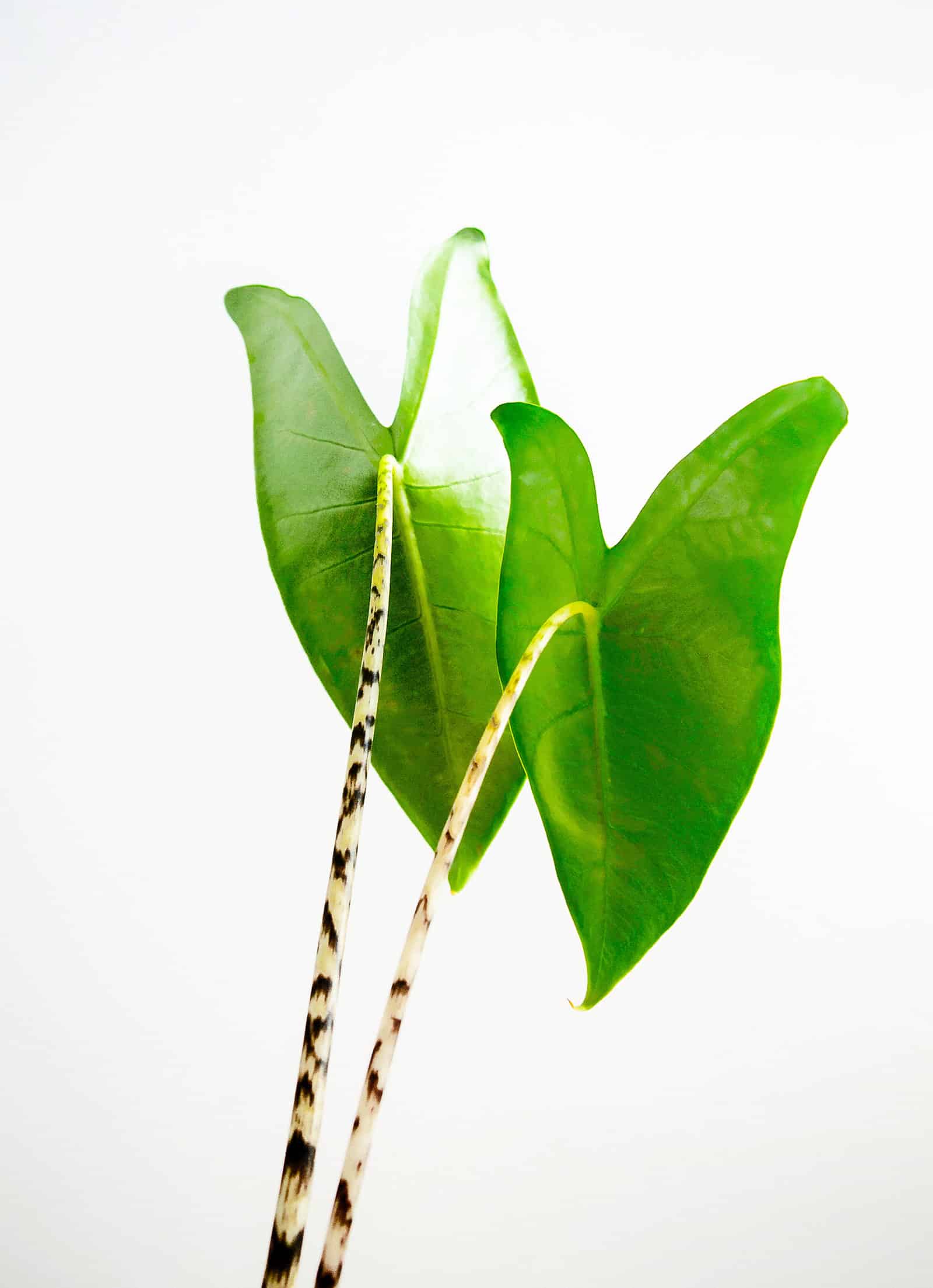
Caring for Alocasia zebrina
Light and temperature
When considering light requirements for Alocasia zebrina, it’s important to remember its jungle origins. Although this plant loves plenty of light, most of the sun is blocked out by taller trees in its natural habitat.
Your zebra plant can handle some morning or evening rays indoors, but it’s a good idea to protect it from anything harsher, especially if the plant hasn’t been acclimated to intense light conditions. You can put yours in a window that receives bright indirect light.
As for temperature, again, this is a jungle plant! It won’t appreciate cold and can actually temporarily die off if exposed to low temperatures (see the section on Alocasia zebrina dormancy below for more information about this).
Keep it at room temperature or above for the best results, and try not to let things drop below 59°F to prevent issues. This also means keeping your Alocasia zebrina away from A/C units and drafty windows, as it won’t respond well to sudden temperature swings.
Watering
It won’t come as a surprise that a tropical rainforest plant like this one likes plenty of water!
Alocasia zebrina likes being kept lightly moist, especially during the warm and bright summer months when it should be growing well and regularly putting out new leaves. You can water as soon as the top inch or two of soil has dried out, which usually comes down to once or twice a week.
In winter, you can let the soil dry out a little more. After all, due to the lower temperatures and reduced light, your Alocasia probably won’t grow as rapidly. As a result, the medium doesn’t dry out quite as much, so watering at the same rate as you did during summer can put you at risk of overdoing it.
You can give your plant a drink when the soil is about halfway dry, which will probably be every one to one-and-a-half weeks. If you’re not sure whether it’s time yet, stick a finger in the soil to gauge the moisture level.
Humidity
Another factor you’ll have to pay attention to is humidity. If you’re a houseplant hobbyist and don’t have a cheap humidity meter (hygrometer) yet, I definitely recommend getting this one!
After all, many of our favorite houseplants come from high-moisture tropical zones and won’t be happy with dry air in the home. It’s very handy to be able to keep an eye on things, so that you can consider running a humidifier if the air isn’t quite humid enough.
Alocasia zebrina, as well as most other tropical houseplants, will need a humidity level that’s at least 50 percent, with 70 percent or more being ideal.
If the levels in your home regularly drop below 40°F, it’s probably a good idea to take some measures to prevent your plants from developing dry leaf tips, spider mite infestations, and other typical problems associated with dry air.
Soil and planting
As discussed above, Alocasia zebrina loves moisture. However, it doesn’t love soggy soil and standing water: wet feet can quickly lead to root and corm rot in this plant.
This is why it’s important to always use a planter with a drainage hole that allows excess water to drain. You can place a saucer under the pot and drain this around an hour after watering, or you can opt to water smaller specimens in the sink to avoid messes.
The soil mixture you use for your Alocasia should reflect its need for both moisture and drainage. Sounds complicated, but luckily it’s not! You just need to mix materials that retain some water with other materials that make it possible for the excess to drain.
Here’s an example of a basic soil mixture that would work well for a zebra plant, as well as for many of the other tropical houseplants we love to grow:
- 2 parts high-quality houseplant potting soil
- 2 parts perlite
- 1 part fine orchid bark
You can also experiment with other soil amendments and amounts in order to finetune the soil mix to your watering habits. Is the soil drying out too quickly for your liking? Toss in some sphagnum moss. Is it staying moist for too long? Try adding some more orchid bark, or a coarser variety.
Recommended products for Alocasia zebrina plant care:
- FoxFarm Ocean Forest Potting Soil
- Good Earth Organics Premium Potting Soil
- Perfect Plants Organic Perlite
- Better-Gro Orchid Bark
Dormancy
Yep, you read that right: Alocasias can go into dormancy. This is a mechanism meant to protect the plant from low winter temperatures. The leaves will die off as energy is stored in the underground corm, ready to sprout again when things warm up a bit.
Don’t panic if your Alocasia zebrina suddenly starts dying off in fall, and certainly don’t throw it away!
Although dormancy doesn’t always happen in the home because the temperature doesn’t tend to drop like it would outside, it’s still possible for your Alocasia to respond to the lower light levels.
If you’re dealing with a dormant plant, just try to mostly leave it alone. Keep the soil barely moist, don’t fertilize, and place the planter with the corms in a cool and dark spot until you’re ready to wake it back up in spring.
Once things are starting to warm back up outside, you can start coaxing your zebra plant out of hibernation. Place the planter in a warm and bright location, maybe even on a heat mat if you have one available.
Give it a good drink and then wait. The corm should realize it’s time to come out of its slumber and start putting out new leaves soon enough.
Fertilizing
During the active spring and summer growing months, your Alocasia zebrina will thrive with regular application of a diluted liquid houseplant fertilizer. Feeding every other week should work well, or even every week if your plant is really taking off.
Don’t fertilize during the inactive winter months, especially if your Alocasia is partly dormant. You’ll just end up damaging the roots by doing so.
Recommended fertilizers for Alocasia zebrina:
- Maxsea All-Purpose Seaweed Plant Food
- Houseplant Resource Center Liquid Fertilizer for Houseplants
- Instant Biologics Instant Plant Food (Fizzing Nutrient Tablets)
Pruning
Because Alocasias like this one will continually shed their bottom leaves while putting out new ones at the top, regular pruning is recommended to keep them looking their best.
Just don’t prune too early: let leaves go crispy before removing them, so your Alocasia zebrina can reabsorb all the nutrients from them. This also applies to specimens that are going into dormancy.
Dividing or repotting
Like most other Aroids, Alocasia zebrina can produce side shoots that pop up from the soil next to the mother plant. I personally like to keep the mom and her babies in the same planter to make for a large and spectacular-looking plant, even if that does mean I have to repot a bit earlier to make space for everyone.
However, division is really the only way to propagate Alocasia zebrina, so if you want to produce more plants, you’ll have to separate the offshoots (I’ll get into this below).
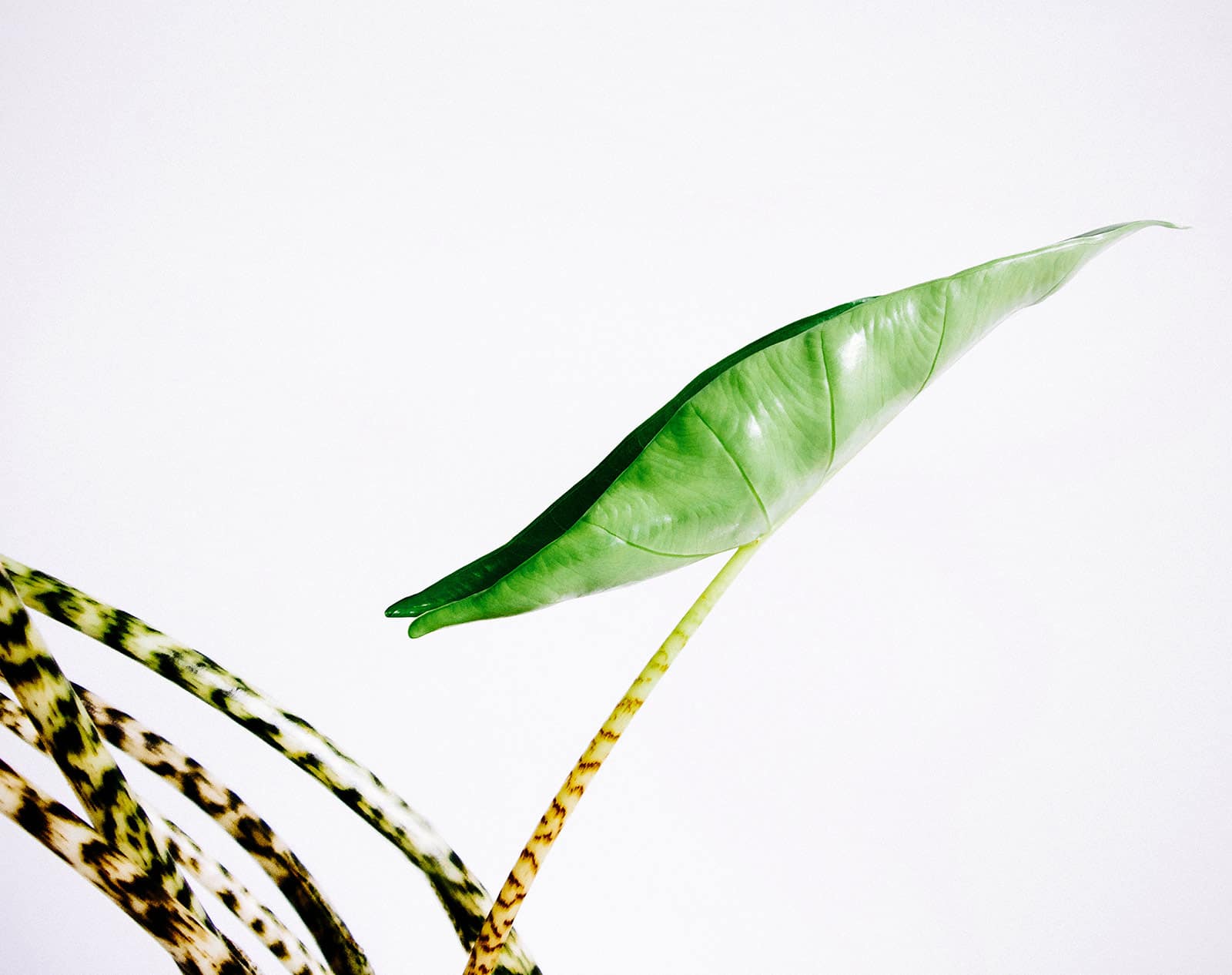
Propagating Alocasia zebrina
Unfortunately, Alocasias can’t be propagated by means of stem cuttings like many other houseplants. The main reason for this is that they don’t actually have stems! The leaves grow directly from the corm, and what we tend to call the “stem” is actually the leaf petiole.
You can still multiply your Alocasia zebrina, but it will involve division, which means the plant has to have side offshoots, unless you feel confident enough to cut straight through the mother clump.
You can take the whole thing out of the planter and lay it down to see what you’re working with; in many cases, the shoots will separate almost by themselves. If they don’t, you can use a sharp and clean knife to make a vertical cut, ensuring each section has a few roots of its own.
Once you’ve obtained your zebra plant sections, you can plant each one into your standard Alocasia soil. Because they already have their own root systems, no extra care is needed. They should keep growing on their own just fine.
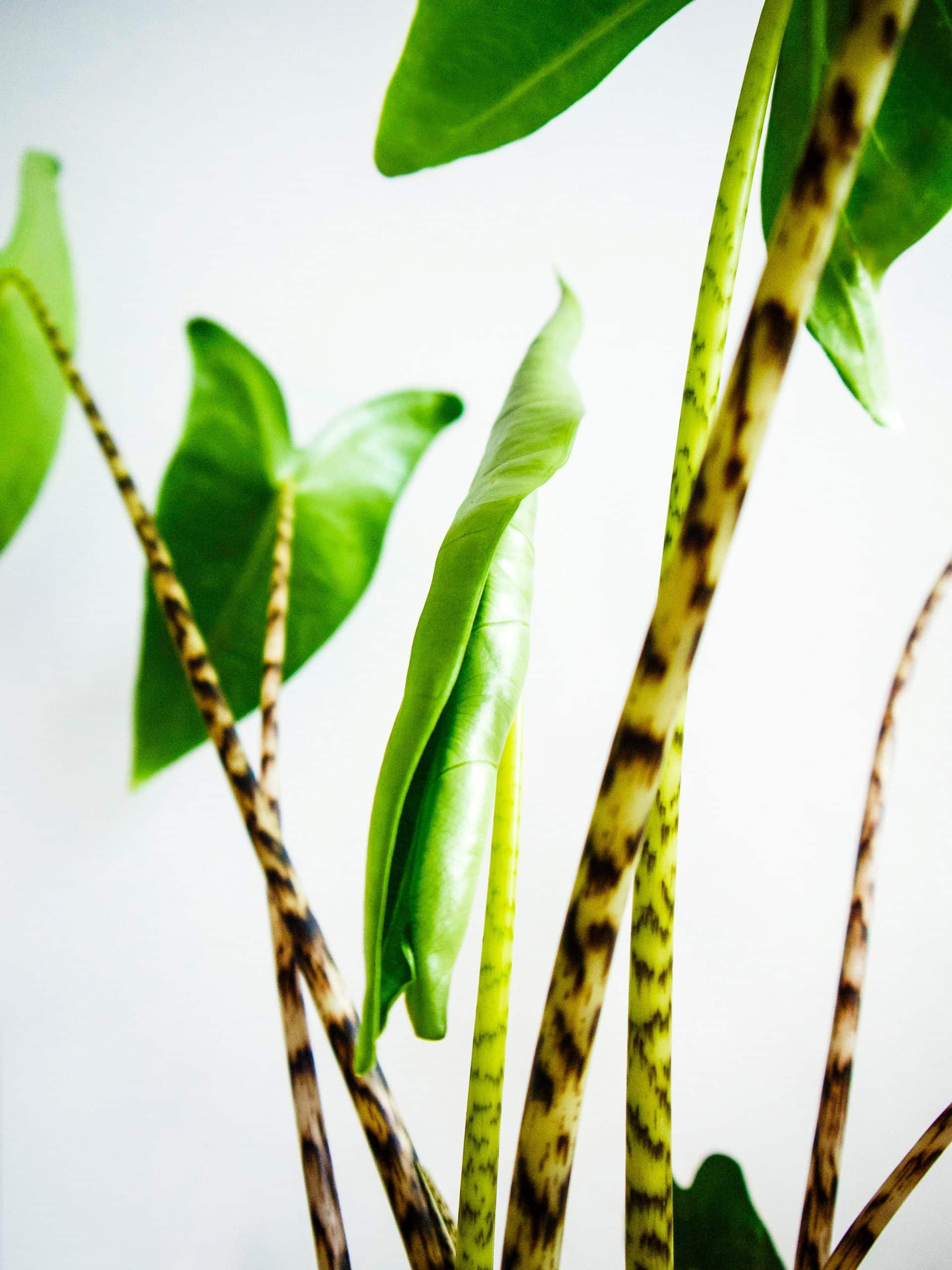
Is Alocasia zebrina toxic to cats and dogs?
Although it’s not explicitly toxic, Alocasia zebrina contains calcium oxalate crystals, which can cause irritation and swelling. It’s best to keep this plant away from your pets if you think they’ll be tempted to take a bite.
Sources:
https://powo.science.kew.org/taxon/urn:lsid:ipni.org:names:77177187-1/general-information
https://www.pna.gov.ph/articles/1114863
Hay, A. (1999). the genus Alocasia (Araceae-Colocasieae) in the Philippines. US Government Printing Office.
Horticultural Society of London, & Royal Horticultural Society (Great Britain). (1862). Proceedings of the Horticultural Society of London (Vol. 2).


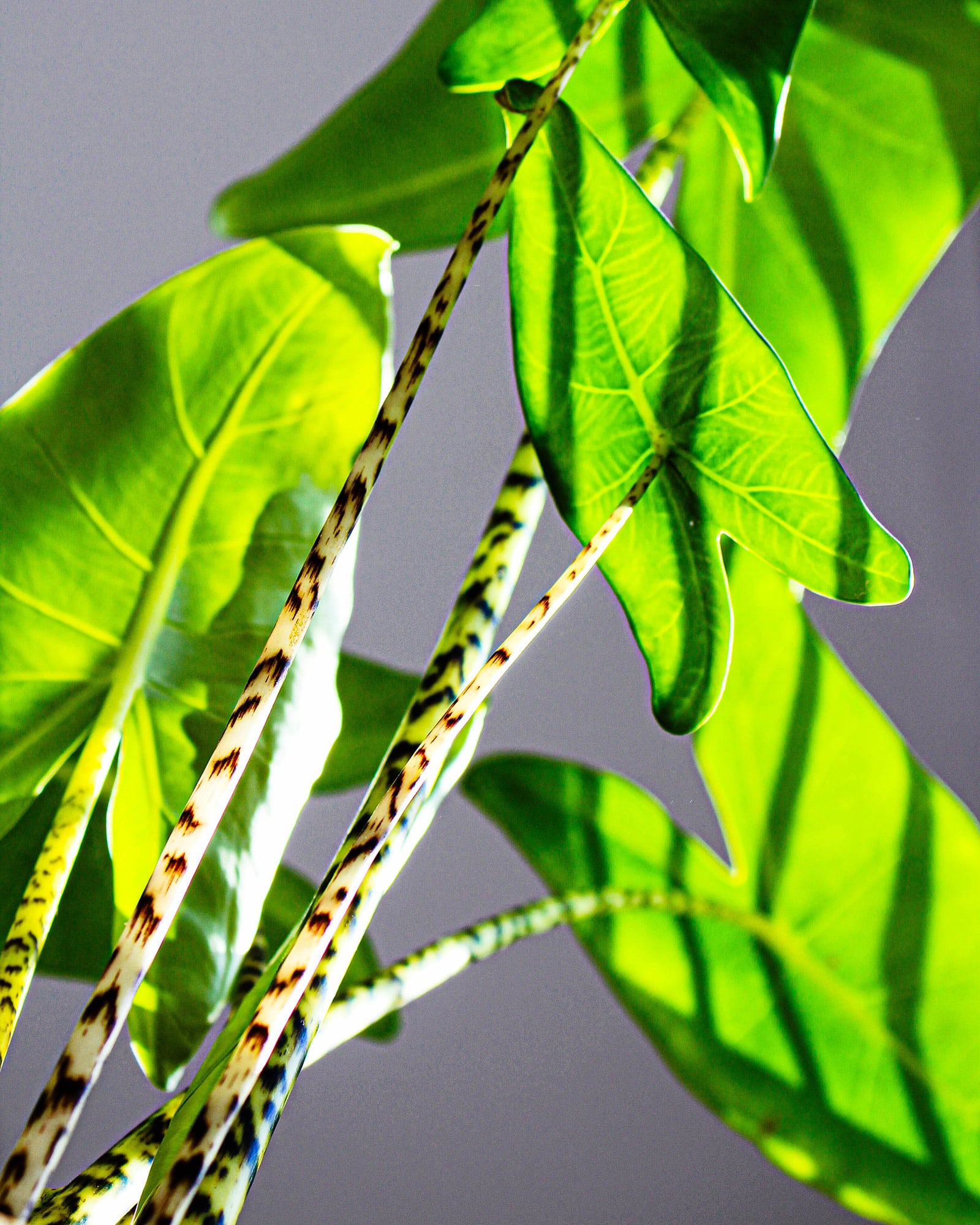













I have one of these plants and it was growing great but all of a sudden now it is dripping sticky liquid stuff from the leaves. Just wondering what it may be? Thanks!
My plant is starting to bloom and I also have 3 small shoots spruiting up. I’m not sure if I should try and separate them from the mother plant!